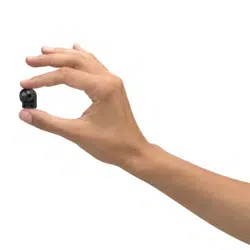Loading ...
Loading ...
Loading ...

AXIS P1204 Network Camera
Video
Camera Settings
The Video > Camera Settings page provides access to advanced image settings for the Axis product.
Image Appearance
Increasing the Color level increases the color saturation. The value 100 gives maximum color saturation. The value 0 gives a
black and white i mage.
The image Brightness can be adjusted in the range 0–100, where a higher value produces a brighter image.
Increasing the Sharpness can increase bandwidth usage. A sharper image might increase image noise es pecially in l ow light
conditions. A lower setting reduces image noise, but the whole image will appear less sharp.
The Contrast change s the relative difference betwee n light and dark. It can be adjusted using the slidebar.
White Balance
White balance is used to make colors in the image appear the same regardless of the color temperature of the light source. The Axis
product can be set to automatically identify the light source and compensate for its color. Alternatively, select the type of light
source from the drop-down list. For a description of each available s etting, see the online help
.
Exposure Settings
Configure the expo sure settings to suit the image quality requirements in relation to lighting, frame rate and bandwidth
considerations.
Exposure value - Click in the bar to fine-tune the expo sure.
Exposure control - These settings is used to ad apt to the amount of light used. Automatic is the default settings can be used in most
situations. The shutte r speed is automatically set to produce optimum image quality. Flicker-free 50 or 60 Hz is used to remove
flicker which can b e caused by fluorescent a nd other light sources. The Hold current option l ocks the current exposure settings.
Enable Backlight compensation - Enable this option if a bright spot of light, for example a light bulb, causes other areas in
the image to appear too dark.
Exposure zones - This settings determines which part of the image is used to calculate the exposure. For most situations, the Auto
setting can be used. For particular requirement, select a predefined area.
Exposure priority - When Motion is prioritized and maximum Shutter time is set to a small val ue, motion blur in the image is
minimized. This can be useful for recognition of mo ving objects such as people and vehicles. However, prioritizing motion may cause
an increase in ima ge noise, especially in low light situa t ions. When Low n oise is prioritized and Gain is set to a small value, image
noise is minimized. The file size is reduced, which can be useful if storag e space or bandwidth is limited. However, prioritizing low
noise may resu lt in a very dark image, especially in low light situations.
Overlay
Overlays are used to
provide extra in formation, for example for forensic video analysis or during product installation and
configuration. Overlays are superimposed over the video stream.
An overlay text can di splay the current d ate and time, or a text string. When using a text string, modifiers can be used to display
information such as the current bit rate o r the current frame rate. For information about available modifiers, see File Naming &
Date/Time Formats in the online help
.
To enable overlays:
1. Go to Video > Video Stream and select the Image tab.
2. To include an overlay image, select Include overlay image at the coordinates. The overlay image must first be uplo aded to
the Axis product, see Overlay Image.
17
Loading ...
Loading ...
Loading ...
